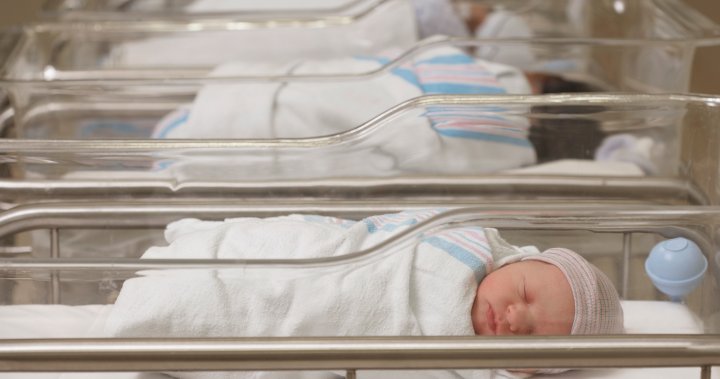Canada’s fertility rate, which has been steadily declining, has hit a record low and the country is now among the “lowest-low” fertility nations.
Statistics Canada released new data on Wednesday showing that the Canadian fertility rate in 2023 was 1.26 children per woman, which is the lowest recorded level since the agency began collecting data.
The record-low fertility rate was registered across the country in 10 of the 13 provinces and territories.
Fertility rate is an estimate of the average number of live births a woman can be expected to have in her reproductive life, according to StatCan.
In 2022, the fertility rate had already fallen to a record low of 1.33 children per woman. But that record has now been broken again.
“This decline from 2022 to 2023 mostly reflects an increase in the number of women of childbearing age in 2023, as the number of births was similar in both years,” StatCan said.
In total, 351,477 babies were born in Canada last year, which is similar to the number from 2022.

Why is Canada’s fertility declining?
With the new data on fertility, Canada joins the group of “lowest-low” fertility countries that have a rate of 1.3 children per woman or less, StatCan said.
South Korea, Spain, Italy and Japan are other nations in this categorized group.

Get weekly health news
Receive the latest medical news and health information delivered to you every Sunday.
A StatCan report published in January said Canada, like other countries, is riding the “fertility ‘pandemic rollercoaster’” with more families putting off having children.
“Given the COVID-19 pandemic initiated a period of public health crisis, as well as economic and societal shocks, it is possible that a segment of the population responded to this period of widespread uncertainty via their childbearing choices,” it reads.
Experts also point to prolonged economic uncertainty, the high cost of living, lifestyle changes and work decisions for the drop in births.
“It’s been tight for a lot of people. Inflation certainly hasn’t helped. For some couples, looking at their paycheques, looking at their expenses, they’re saying, ‘Maybe now is not an ideal time to have kids,’” Don Kerr, a demographer at King’s University College at Western University in London, Ont., told Global News in January.

Premature birth rate rising
StatCan also reported that the rate of premature births has increased over the past three decades.
In 2023, it reached the highest level in 50 years at 8.3 per cent.
Preterm or premature birth is when the baby is born before 37 weeks of pregnancy are completed.
Babies that are born prematurely are at an increased risk of illness, hospitalization and death.
“The increase in the rate of premature births could be related to the higher proportion of older mothers, as risk of a premature birth increases as the age of the mother increases,” StatCan said.
Last year, 26.5 per cent of mothers were aged 35 years and older, compared with 10.7 per cent in 1993.
— with files from Global News’ Touria Izri
© 2024 Global News, a division of Corus Entertainment Inc.





